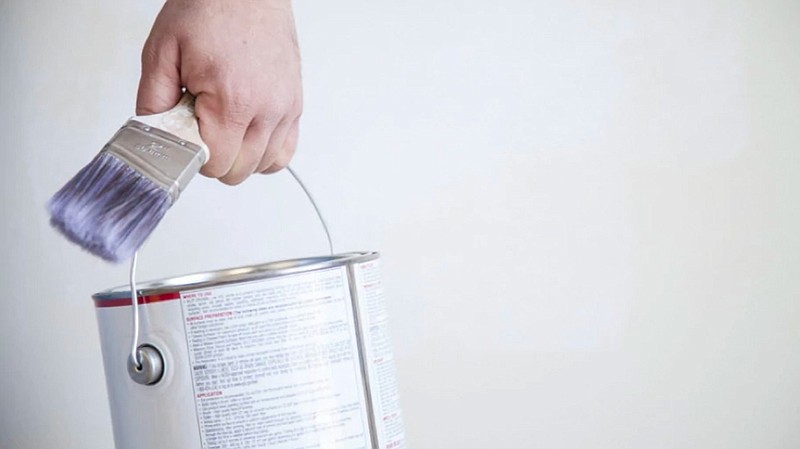Applying a fresh coat of paint can do wonders to refresh your home's interior. And choosing the right type and finish (or sheen) will go a long way in ensuring a beautiful and lasting result. Of course, it helps to start with an understanding of the different finishes and paint types available.
WHAT INTERIOR PAINT FINISHES ARE AVAILABLE?
Interior paint typically comes in five finish options:
Flat: Flat paint has a matte finish that doesn't reflect light. Generally speaking, flat finishes hold dirt and lose saturation upon cleaning. This makes flat finishes best reserved for ceilings and low-traffic areas. Of course, flat finishes are easy to touch up and good at hiding imperfections. And some paint manufacturers also offer scrubbable varieties. Experts recommend using flat paint on ceilings and in dining rooms, formal living rooms, hallways and adult bedrooms.
Eggshell: Eggshell paints have a matte finish and an attractive, understated shine. Eggshell paints wash slightly better than flat paints, allowing for light cleaning when needed. But they don't hide surface imperfections as well. Experts recommend using eggshell paint in bedrooms and living rooms.
Satin: Satin paints feature a medium-gloss finish that reflects a greater level of light for a richer, pearly look-not high-gloss, but smooth and attractive. Satin finishes aren't great at hiding imperfections, but they are highly washable and will stand up to high traffic and high levels of humidity. Experts recommend using satin paint in hallways, family rooms, bathrooms, kitchens, laundry rooms and kids' rooms, as well as on baseboards and molding.
Semi-gloss: Semi-gloss paints offer a highly reflective and durable finish. Semi-gloss paint is typically used to paint baseboards and molding because it can withstand high levels of traffic, humidity and cleaning. Like satin and eggshell finishes, semi-gloss does a poor job of hiding wall imperfections. Experts recommend using semi-gloss paint in kitchens and bathrooms-and also on baseboards, trim and molding, cabinets and other wood finishes.
High-gloss: High-gloss paint offers a mirror-like reflective finish that makes it the most durable and easiest to clean of all the paint finishes. It's typically too shiny for use on interior walls-and it will surely show every imperfection-but it's great for trim and furniture. Experts recommend using high-gloss paint in kitchens and on door and window trim.
WHICH TYPE OF PAINT IS RIGHT FOR YOUR PROJECT?
Choosing the right type of paint is as important as choosing the right finish. Latex- and oil-based paints are the most common interior paint varieties. The best type for your project will depend on what you're painting and your level of skill.
Oil-based paint: Oil-based paint's strong odor, long drying time and involved cleanup can make it more difficult to use than latex paint. But oil-based paints will provide a smoother and longer-lasting finish than most latex options, and they will also give you more thorough coverage in one coat. Experts recommend using oil-based paint in high-traffic areas and on wood, doors, molding and window frames.
Latex (water-based) paint: Latex paint is easy to apply and easy to clean up. Plus, it's made with environmentally friendly ingredients-most latex paints are made from pigment, water and an acrylic resin binder. Water-based paint is more forgiving than oil-based paint, but the makeup of latex paint makes it more susceptible to peeling-and it may not adhere to smooth surfaces like metal or certain plastics. It's also worth noting that latex paints tend to swell wood grains, which can make sanding in between coats a necessity. Experts recommend using latex paint on interior walls and ceilings.

